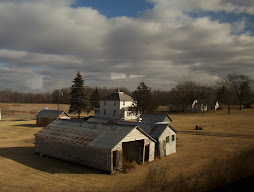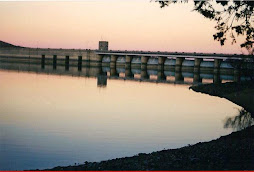Huge, and worrisome. Not that anyone will pay attention until the end results manifest: Big, Bigass, muthafuckin quakes! The billion dollar question: When? Now? 100, 1000, or 1 million years from now? The L.A. Times, via The Extinction Protocol:
Planet Earth may be 4.5 billion years old, but that doesn’t mean it can’t serve up a shattering surprise now and again. Such was the case on April 11 when two massive earthquakes erupted beneath the Indian Ocean off the coast of the Indonesian island of Sumatra, far from the usual danger zones. Now scientists say the seafloor ruptures are part of a long suspected, yet never before observed, event: the slow-motion splitting of a vast tectonic plate. The first of the quakes, a magnitude 8.7, was 20 times more powerful than California’s long anticipated “big one” and tore a complex network of faults deep in the ocean floor. The violence also triggered unusually large aftershocks thousands of miles away, including four off North America’s western coast. “It was jaw-dropping,” said Thorne Lay, a professor of Earth and planetary sciences at UC Santa Cruz. “It was like nothing we’d ever seen.” At first, Lay wondered whether the computer code he used to analyze earthquakes was wrong. Eventually, he and other scientists realized that they had documented the breakup of the Indo-Australian plate into two pieces, an epic process that began roughly 50 million years ago and will continue for tens of millions more.
Lay and other scientists reported their findings online Wednesday in the journal Nature. Most great earthquakes occur along plate borders, where one plate dives beneath the adjoining plate and sinks deep into Earth’s mantle, a process called subduction. The April 11 quakes, however, occurred in the middle of the plate and involved a number of strike-slip faults, meaning the ground on one side of the fault moves horizontally past ground on the other side. Scientists say the 8.7 main shock broke four faults. The quake lasted 2 minutes and 40 seconds — most last just seconds — and was followed by a second main shock, of magnitude 8.2, two hours later.

Planet Earth may be 4.5 billion years old, but that doesn’t mean it can’t serve up a shattering surprise now and again. Such was the case on April 11 when two massive earthquakes erupted beneath the Indian Ocean off the coast of the Indonesian island of Sumatra, far from the usual danger zones. Now scientists say the seafloor ruptures are part of a long suspected, yet never before observed, event: the slow-motion splitting of a vast tectonic plate. The first of the quakes, a magnitude 8.7, was 20 times more powerful than California’s long anticipated “big one” and tore a complex network of faults deep in the ocean floor. The violence also triggered unusually large aftershocks thousands of miles away, including four off North America’s western coast. “It was jaw-dropping,” said Thorne Lay, a professor of Earth and planetary sciences at UC Santa Cruz. “It was like nothing we’d ever seen.” At first, Lay wondered whether the computer code he used to analyze earthquakes was wrong. Eventually, he and other scientists realized that they had documented the breakup of the Indo-Australian plate into two pieces, an epic process that began roughly 50 million years ago and will continue for tens of millions more.
Lay and other scientists reported their findings online Wednesday in the journal Nature. Most great earthquakes occur along plate borders, where one plate dives beneath the adjoining plate and sinks deep into Earth’s mantle, a process called subduction. The April 11 quakes, however, occurred in the middle of the plate and involved a number of strike-slip faults, meaning the ground on one side of the fault moves horizontally past ground on the other side. Scientists say the 8.7 main shock broke four faults. The quake lasted 2 minutes and 40 seconds — most last just seconds — and was followed by a second main shock, of magnitude 8.2, two hours later.










































































































No comments:
Post a Comment